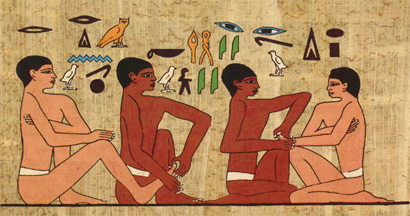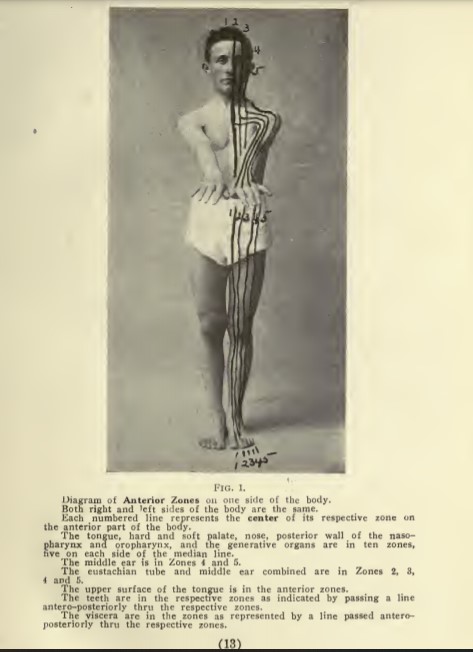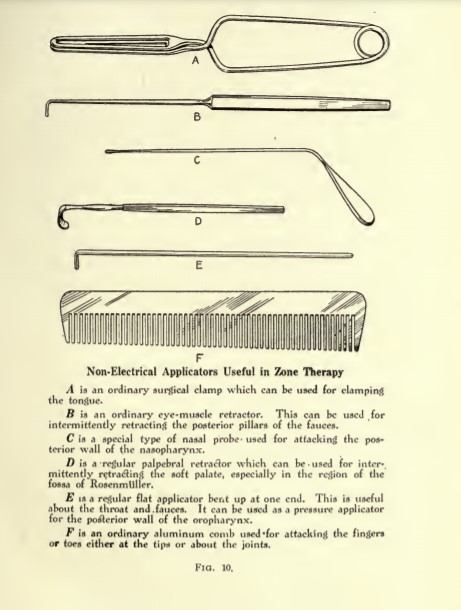6000 BC–3000 BC – Zoku Shin Do is the oldest known form of reflexology. Zoko Shin Do originated in China.
2330 B.C – Tomb of Ankhmahor (highest official after the Pharaoh) at Saqqara, which is also known as the physicians tomb supposedly shows images of foot massage. The painting of Akhmahor, an Egyptian priest was made circa 2200B.C.E. The heiroglyphy is transtlated to read: “Don’t hurt me”. We really don’t know if this is truly reflexology or foot massage.
1000 BC – Yellow Emperor’s Classic of Internal Medicine has a chapter on “Examining Foot Method”
16th Century – Books on Zone therapy written by Dr Adamus and Dr A’tatis and another by Dr Ball in Leipzig.
1771 – Supposedly first mention of reflex by the German physiologist Johann August Unzer.
1833 – Marshall Hall, English physiologist introduced the concept and term ‘reflex action’ concerning unconscious reflexes and volitional acts.
1878 – REFLEX ACTION AS A CAUSE OF DISEASE AND MEANS OF CURE T. LAUDER BRUNTON, M.D., F.R.S.Brain, Volume 1, Issue 2, July 1878, Pages 143–154
1893- Dr Henry Head, an English neurologist, wrote about what became known as ‘Head’s Zones’ and claimed there is a neurological relationship between the skin and the internal organs.
ON DISTURBANCES OF SENSATION WITH ESPECIAL REFERENCE TO THE PAIN OF VISCERAL DISEASE HENRY HEAD, M.A., M.D. Brain, Volume 16, Issue 1-2, 1893, Pages 1–133, https://doi.org/10.1093/brain/16.1-2.1Published: 01 January 1893
1895- Dr. William Fitzgerald (1872-1942) is said to be the father of modern reflexology in the US. He discovered zone therapy as practiced by the Amreican Indians.
1899 – Naegeli published Treatment and Healing of Nervous Suffering and Nervous Pain by Hand Manipulation
1902 – Druckpunkte, ihre Entstehung, Bedeutung bei Neuralgien, Nervosität (Full German text archive.org) (Pressure points, their origin, importance in neuralgia, nervousness) written by Dr. Alfons Cornelius. Google Translate version.
1905 – The afferent nervous system from a new aspect : conclusions … from investigations … in conjunction with W.H.R. Rivers and J. Sherren / Henry Head, W.H.R. Rivers, J. Sherren.
1906 – Sir Charles Sherrington published “The Integrative Action of the Nervous System. (Read free on Google Books)” He hypothesized that the whole nervous system adjusts to stimulus and terms this ‘proprioception’. Sherrington postulated that the reflex is the simplest unit of nervous integration.
1907 – General Principles of Human Reflexology (full text at archive.org): an Introduction to the Objective Study of Personality by Prof. Vladimir Michailovitch Bechterev. Translated by Emma and William Murphy from the Russian of the 4th (1928) edition. Pp. 467. (London: Jarrolds Publishers (Lon don), Ltd., 1933.) 21s. net.
Reflexology, which is a new doctrine, is the science of human personality studied from the strictly objective, bio-social standpoint. Prof. Vladimir Michailovitch Bechterev
1915 – Article in Everybody’s Magazine: To stop that toothache, squeeze your toe. by Edwin Bowers who brought Dr Fitzgeralds work to the public.
1917 – Dr Fitzgerald wrote “Zone Therapy or Relieving Pain in the Home”. See the full text at archive.org
1919 – “Zone Therapy or Curing Pain and Disease”. Full text at archive.org This type of zone therapy uses tools and often works on points in the mouth and other areas of the body. It is not just about the feet and hands.
Dr. Joe Shelby Riley of Washington, DC studied the zone therapy theories of Fitzgerald.
1929 – Elisabeth Dicke, physical therapist, published information indicating her discovery that pathological changes can take place in subcutaneous tissues within the connective tissue layers. Her methods are currently used not only as a treatment for disease of the circulatory system as well as other pathological conditions but also as a diagnostic tool by medical doctors in Germany.
1930s– Eunice Ingham (1879 – 1974) worked with Dr. Riley. In 1938 she wrote a book “Stories the Feet Can Tell” and in 1951 wrote “Stories the Feet Have Told” and in 1960, “Stories the Feet are Telling”.
1932 – The Nobel Prize in Physiology or Medicine 1932 was awarded jointly to Sir Charles Scott Sherrington and Edgar Douglas Adrian “for their discoveries regarding the functions of neurons.” Adrian made the discovery that the electrical intensity of the nerve impulse (or response) depended on the size of the nerve rather than upon the strength of the stimulus. To reflexologists this means that applying light pressure can be just as effective as heavy pressure. In the 1890s Charles Sherrington showed how muscular contractions are followed by relaxation and how different reflexes are part of a complicated interplay in which the spinal cord and brain process nerve impulses and turn them into new impulses to muscles and organs.
1933 – General Principles of Human Reflexology : an Introduction to the Objective Study of Personality.
By Prof. Vladimir Michailovitch Bechterev. Translated by Emma and William Murphy from the Russian of the 4th (1928) edition. (This is often mentioned in articles on the history of reflexology but has nothing to do with the feet or zones.)
But his varied scientific activity is displayed with peculiar vividnessin his creation of a new and autonomous science which he calls “ reflexology.” According to Bechterev’s definition, reflexology is a branch of science which studies the human personality from the strictly objective bio-social standpoint. Reflexology, as Bechterev teaches, investigates all the manifestations of the “ so-called psychic activity,” or, in other words,“ the spiritual sphere ” from the objective standpoint and confines itself to the external peculiarities of the activity of man : his facial expressions, his gestures, voice, and speech, as a coherent integration of signs, in correlation with the exciting external influences—physical, biological, and, above all, social—but also with the internal, regardless of whether either of these two types of influence is referable to the present or the past. From the standpoint of reflexology, man is not only a living organism, but a “bio-social being” acting in dependence not only on the natural, but also on the social, environment. The divisions of the earlier psychology dealing with intellect, feeling, memory, will, and attention Bechterev replaces in reflexology by divisions into higher and personal reflexes, mimico-somatic reflexes, reflexes of concentration, of reproduction, etc. He does not confine himself to the study of the individual, but utilises
reflexological experiment in the study of communities, and so creates“ collective reflexology.” Then, in his attempts to investigate man’s life from the day of birth, Bechterev wrote a series of papers devoted to the study of the neuropsychic life of infants, and thus laid the foundations of genetic reflexology. Reflexology clearly illustrates Bechterev’s creativeness, and is the culminating point of his scientific activity.
1969 – BooK: Zone Therapy Is ScientificSubjectively & Objectively By W. D. Chesney
1974 – Hanne Marquardt published Reflex Zone Therapy of the Feet.

1990 – International Council of Reflexologists (I.C.R.) conference in Toronto, Canada in 1990.
1993 – The first known scientific study on reflexology presented in a peer-review journal, Obstetrics and Gynecology, was authored by Terry Oleson, Ph.D., and William S. Flocco, of the American Academy of Reflexology. OLESON, TERRY PhD1; FLOCCO, WILLIAM2 Randomized Controlled Study of Premenstrual Symptoms (PDF) Treated With Ear, Hand, and Foot Reflexology, Obstetrics & Gynecology: December 1993 – Volume 82 – Issue 6 – p 906-911
1997 – Reflexology Registration Council of Ontario (RRCO) created.
March 2000 – Executive Order 13147—White House Commission on Complementary and Alternative Medicine Policy is ordered to study: legislative and administrative recommendations for assuring that public policy maximizes the benefits to Americans of complementary and alternative medicine.
CAM (Complementary and Alternative Medicine) Report (2000-2001) findings:
The five most popular services after combining both inpatient and outpatient occurrences are Pastoral Care (197), Massage Therapy (159), Relaxation Treatment (133), Guided Imagery (107) and Therapeutic Nutrition (103). No other service had a frequency of 100 or more. The five least frequently reported services after combining both inpatient and outpatient occurrences are Naturopathy (8), Homeopathy (13), Chiropractic (19), Medical Symptom Reduction Program (20), Reflexology (36).



